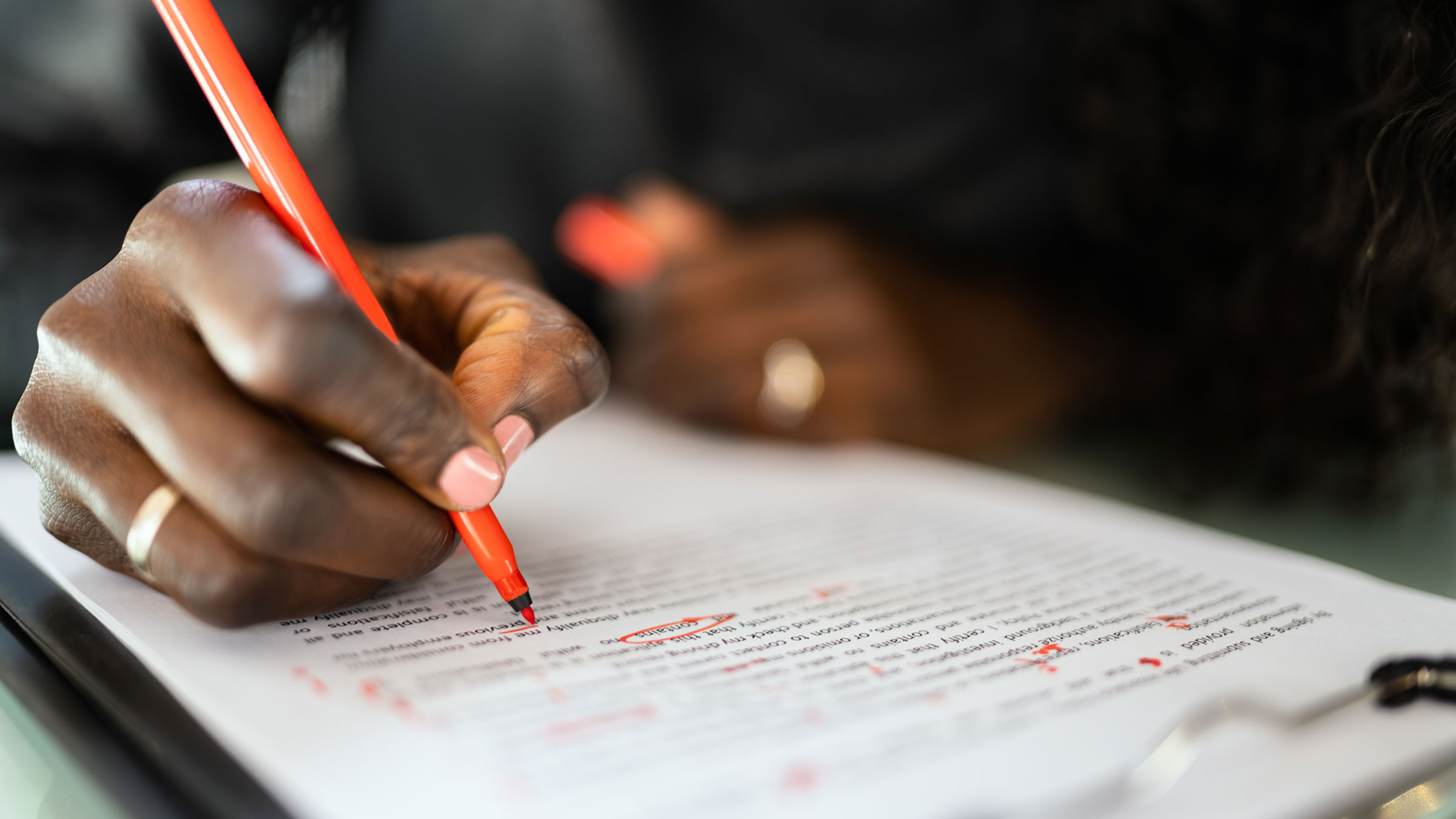Jul 18, 2023
Proofreading Your Own Work
Brian Clausen, Copy Editor
Whether you’re writing a routine email or an extensive sales report, a commitment to accuracy ensures the information you’re presenting is reliable. Other people will be reading it, and it doesn’t matter if it’s just one person or 100, you still want to convey to them that you’re dedicated to giving them trustworthy data.
Oftentimes, you might miss some mistakes even though you’ve spent a lot of time pouring over what you’ve written. Because you’ve seen it and read through it a lot, you can overlook errors that thraeten to derail your work. Odds are you probably didn’t notice at first glance that “threaten” in the previous sentence is misspelled, or that “poring” over your work is actually the correct verbiage, rather than “pouring”.
9 Proofreading Tips and Techniques
It’s easy to gloss over these small mistakes; spellcheck is a useful tool but it can’t ensure proper context. So what are some key things to remember when proofing your own work?
- Avoid proofing while writing: Unless you know you just accidentally typed something incorrectly, wait until you’re done writing to proof your work so you don’t disrupt your creative flow.
- Limit distractions: Find a time in your day where you don’t have any impending calls or meetings so you can focus completely on proofing. If you try to proof while you’re on a call or working on a different task, it’s likely you won’t catch a mistake.
- Read it out loud: This can help bring to light those contextual mistakes that spellcheck won’t catch. Your eyes might deceive you, but your voice won’t.
- Read it backwards: This isn’t reading each word from end to beginning (although you could do that). Rather, read the last sentence, then the sentence before it and so on until you get back to the start. Changing up the order makes any mistakes you might’ve missed more glaring.
- Take a break: After writing, take a break to work on something else. Or, if it’s the end of the day, return to it tomorrow. Fresh eyes can be very helpful when you’re editing your own work.
- Take it one line at a time: Hold a piece of paper up to your screen so you can only see what’s above it. Sometimes looking at the entire page at once causes your eyes to gloss over and miss a mistake in a sentence.
- Give yourself time: Writing in a panic usually doesn’t turn out well, and you’ll need time to actually proofread once you’re done writing. Don’t procrastinate; give yourself ample time to review your work.
- Create a checklist: Your company likely has a style guide, and that’s always good to follow. But you can also create your own checklist. What words do you usually misspell? Do you often forget where to put the apostrophe in possessive words? Do you always confuse “effect” and “affect”?
- Read it again: Proofing your work twice is never a bad idea. Even after using each of these tricks for better proofreading, read through your work again to double-check for anything you might’ve missed.
If you’re just firing off a quick email to a co-worker, you probably won’t need to use all of these proofreading techniques. But for any long-form writing that might be required of you, use these tips to ensure you’re not sending your work to someone else before it’s really ready.
Brian Clausen
Copy Editor
Brian Clausen is a copy editor at SkillPath. He has been with SkillPath for four years, and his writings have appeared on LendingTree, Shutterfly, and Dopplr.
Latest Articles
